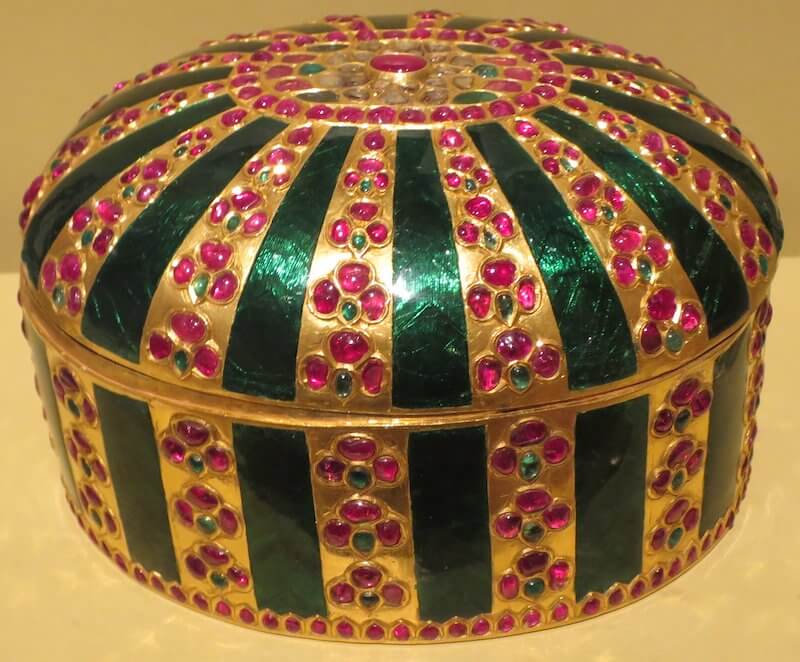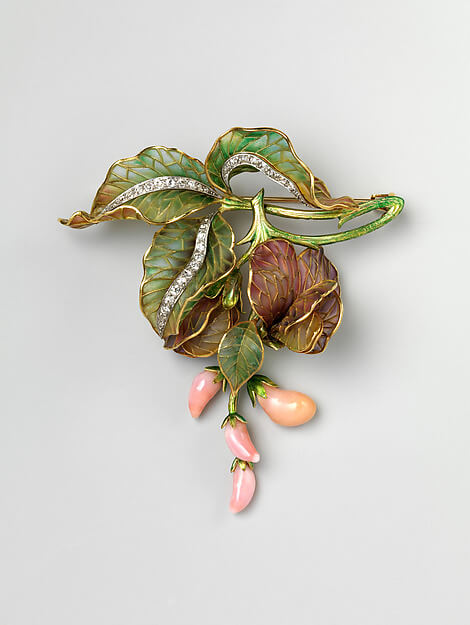History
HOW IT ALL BEGAN
Artists and craftsmen have been using Jewellery Enamel for more than 3000 years, spanning generations and crossing many borders. This provides contemporary Enamelists with a rich and ever-growing source of inspiration. On the map you can see several famous masterpieces crafted at different times, in different places.
Antiquity.
The earliest archaeological evidence of the usage of Jewellery Enamel stems from Cyprus. The found artefacts are a number of rings that were manufactured by the goldsmiths of the Mycenaean culture in the 13th century B.C. These skilled craftsmen already knew two fundamental techniques of enamelling, the cloisonné and the champ-levé.
During the time of the Roman Empire it was mainly the Celtic cultures that kept using Jewellery Enamel to adorn weapons or jewellery. However, the major developments in Enamel making took place in the Byzantine Empire on the verge of the middle ages. In Byzantine arts, Jewellery Enamel was one of the predominant materials used for ornamentation, both on sacral as well as on profane objects. Furthermore, the Byzantines started to use the material for pictorial purposes such as the representation of Christ or the Saints.

Example of sacred imagery with Enamel
Middle Ages.
The middle ages saw a strong concentration of artistic activity in the service of the religion. During the Romanic and the Gothic period a desire for precious and lustrous materials arose that was satisfied by more and more, often golden, ornamentations in the interior of churches and cathedrals. In this context Jewellery Enamel surged as the foremost material for depicting the exclusively sacred imagery (besides stained glass in the Gothic era, of course).
Works such as the Altar of Verdun (12th century) or the Pala d’Oro (12th-14th century) are testimonies of the outstanding level of craftsmanship that makers of Jewellery Enamel achieved in this period. In the Gothic era baisse-taille developed as a new manufacturing method that took advantage of the translucence of the material in order to create impressive effects of visual depth.
Rennaissance and Orient.
During the Renaissance art slowly reentered the profane sphere. While the autonomous panel painting began to claim its predominance in the field of pictorial art, Jewellery Enamel came to be used mainly as an ornamental element in objects of daily use. Goldsmiths were often commissioned to craft items such as silverware or drinking cups for affluent members of aristocracy. The most famous example of this class of objects is Cellini’s Saliera.
In the Middle East and in Northern India the Minakari emerged now as a new art form in which Jewellery Enamel is used to create intricate kaleidoscopic patterns on the surfaces of plates and flat bowls. Via the Mughal Empire Jewellery Enamel also started to spread to the Far Eastern cultures of China and Japan.

Covered box from northern India
Baroque.
Even in the Renaissance Enamel makers from the French city of Limoges had started to develop what is known as painted Enamel. This term describes a process of enamelling in which the material is freely applied onto an even metal surface. This allows it to be used in a way similar to oil paints. This technique was now further refined and served artisans to craft a vast number of miniature paintings, most of all portraits, to decorate items such as watches, snuffboxes or medallions.
One exceptional work of Enamel making, crafted in the Baroque period, is Johann Melchior Dinglinger’s The Birthday of the Grand Mughal Aurangzeb. This work includes 132 miniature figures within the setting of the imperial court of the Indian Grand Mughal.
19th century.
Within the framework of the dramatic technological and cultural developments of this century, Enamel design too, is entering uncharted territory. Fabergé’s Easter Eggs are maybe the world’s best known works of Enamel making. For their creation Faragé relied on semi-mechanic processes that were only made possible by the technological advances of his époque.
Meanwhile René Lalique’s jewellery are an astonishing manifesto of the successful quest for a new form of aesthetic expression that underlies the Art Nouveau movement. For him and other artisans Jewellery Enamel is the medium that provides the necessary vibrancy as well as the chromatic subtlety to serve as a vehicle for the reformative spirit of Art Nouveau.

Brooch by René Lalique
20th and 21st centuries.
Since the middle of the 19th century Japanese Enamelists had been systematically refining the technological processes involved in Enamel making. Around the turn of the century it is artists such as Ando Jubei that solidify Japan’s reputation as the country that produces the world’s most sophisticated works of Jewellery Enamel.
After the First World War Jewellery Enamel is predominantly used in the service of Art Déco. This new aesthetic is now favouring clear geometric shapes over the intricate organic designs of Art Nouveau. In this epoch two of the most important producers of Jewellery Enamel are Gérard Sandoz and the Cartier company.
After World War II artists like Lili Schultz (who originally trained at Bauhaus) usher in the return of Jewellery Enamel into the field of pictorial art. Contemporary artists are using the medium of Jewellery Enamel in manifold ways, ranging from the depiction of abstract-monochrome landscapes (e.g. René Roberts), to brightly coloured Neosymbolist sculptures and portraits (e.g. Jessica Calderwood).
Become part of an ancient tradition.
Although the basic principle of enamelling has remained the same, various techniques, accessories and the know-how have evolved over the years into a broad field. Learning to understand the combination of metal and glass takes time and patience. But this is probably what has fascinated people since time immemorial and still inspires them today. Enameling is a craft that offers many surprises and is worth discovering. Become part of this vast and rich tradition of craftsmanship !

